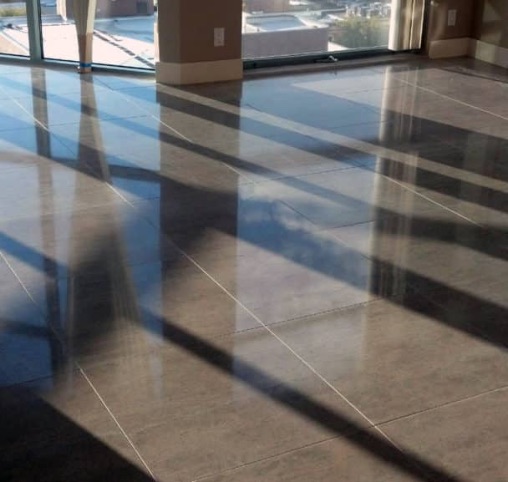Basic Information
![]()
Natural stone has been used for flooring for hundreds of years. There are many choices, marble, and granite are the most popular. A new natural stone tile has entered the market – limestone. It is elegant in appearance and has become a very popular choice for homeowners.
Installing limestone tile is no different than installing any natural stone product such as granite or marble. A thin set mortar should be used and the joints between tiles should be filled with grout. As limestone is a permeable natural stone – water can penetrate it. Therefore, it is important that the limestone tile and the grout be sealed with a very high quality, penetrating sealer to avoid having the tile permanently stained due to spills or other grime.
Limestone lends itself well to creating complex geometric patterns, as it is available in a variety of square and rectangular sizes in thicknesses of 3/16 to 1/4 of an inch thick. It is easy to cut, much easier than granite or marble, but still requires the use of a wet saw with a diamond-impregnated blade. When cut, limestone has a relatively smooth edge, which can be easily filed or honed to a smooth finish.
As with granite and marble, it is important when purchasing your limestone tiles to pay attention to the lot numbers. Any specific lot number means that the individual limestone tiles were cut from the same block of limestone and should provide a color and grain match. Always remember that one of the things that makes any natural stone floor rich and unique is that no two pieces of natural stone are the same in color or grain. Because of the grain and color differences, it is important that you always buy extra tiles, as any specific lot number may not be available a few days after your original purchase. If you are installing a basic grid pattern, it is recommended that you purchase at least 10% more tile than the square footage calculation would indicate. For a diamond pattern, the recommendation is 20% more than the square footage calculation.
Of course, nothing is ever perfect. With all the positive attributes of limestone, there is one negative. Limestone is a very porous material and even if heavily sealed with a penetrating sealer it should not be used in kitchens or full bathrooms – bathrooms with showers or tubs. Building codes in many areas prohibit the use of limestone tile in restaurant kitchens.
